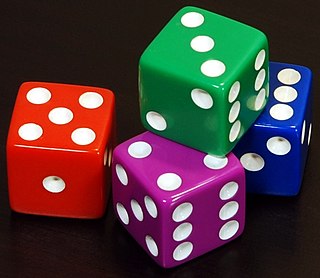
Dice are small, throwable objects with marked sides that can rest in multiple positions. They are used for generating random values, commonly as part of tabletop games, including dice games, board games, role-playing games, and games of chance.

Poker is a family of comparing card games in which players wager over which hand is best according to that specific game's rules. It is played worldwide, but in some places the rules may vary. While the earliest known form of the game was played with just 20 cards, today it is usually played with a standard deck, although in countries where short packs are common, it may be played with 32, 40 or 48 cards. Thus poker games vary in deck configuration, the number of cards in play, the number dealt face up or face down, and the number shared by all players, but all have rules that involve one or more rounds of betting.

A smiley, sometimes referred to as a smiley face, is a basic ideogram that represents a smiling face. Since the 1950s it has become part of popular culture worldwide, used either as a standalone ideogram, or as a form of communication, such as emoticons. The smiley began as two dots and a line to represent eyes and a mouth. More elaborate designs in the 1950s emerged, with noses, eyebrows, and outlines. A yellow and black design was used by New York–based radio station WMCA for its "Good Guys" campaign in the early 1960s. More yellow-and-black designs appeared in the 1960s and 1970s, including works by Franklin Loufrani and Harvey Ross Ball. Today, The Smiley Company holds many rights to the smiley ideogram and has become one of the biggest licensing companies globally.

In geometry, a tetrahedron, also known as a triangular pyramid, is a polyhedron composed of four triangular faces, six straight edges, and four vertex corners. The tetrahedron is the simplest of all the ordinary convex polyhedra.

The face is the front of an animal's head that features the eyes, nose and mouth, and through which animals express many of their emotions. The face is crucial for human identity, and damage such as scarring or developmental deformities may affect the psyche adversely.

A burqa or a burka is an enveloping outer garment worn by some Muslim women which fully covers the body and the face. Also known as a chadaree or chaadar in Afghanistan and Pakistan, or a paranja in Central Asia, the Arab version of the burqa is called the boshiya and is usually black. The term burqa is sometimes conflated with the niqāb even though, in more precise usage, the niqab is a face veil that leaves the eyes uncovered, while a burqa covers the entire body from the top of the head to the ground, with a mesh screen which only allows the wearer to see in front of her. The burqa should also not be confused with the hijab, a garment which covers the hair, neck and all or part of the chest, but does not cover the face.
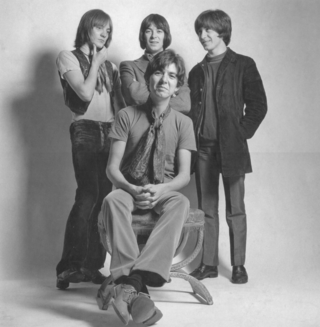
Small Faces were an English rock band from London, founded in 1965. The group originally consisted of Steve Marriott, Ronnie Lane, Kenney Jones and Jimmy Winston, with Ian McLagan replacing Winston as the band's keyboardist in 1966. The band was one of the most acclaimed and influential mod groups of the 1960s, recording hit songs such as "Itchycoo Park", "Lazy Sunday", "All or Nothing" and "Tin Soldier", as well as their concept album Ogdens' Nut Gone Flake. They evolved into one of the UK's most successful psychedelic bands until 1969.

In geography and geology, a cliff is an area of rock which has a general angle defined by the vertical, or nearly vertical. Cliffs are formed by the processes of weathering and erosion, with the effect of gravity. Cliffs are common on coasts, in mountainous areas, escarpments and along rivers. Cliffs are usually composed of rock that is resistant to weathering and erosion. The sedimentary rocks that are most likely to form cliffs include sandstone, limestone, chalk, and dolomite. Igneous rocks such as granite and basalt also often form cliffs.

Ronald David Wood is an English rock musician, best known as an official member of the Rolling Stones since 1975, as well as a member of the Faces and the Jeff Beck Group.
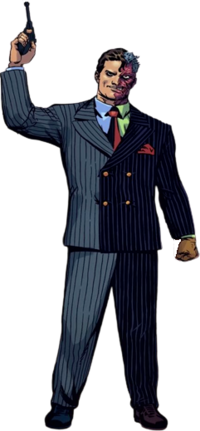
Two-Face is a supervillain appearing in comic books published by DC Comics, commonly as an adversary of the superhero Batman. The character was created by Bob Kane and first appeared in Detective Comics #66. As one of Batman's most enduring enemies, Two-Face belongs to the collective of adversaries that make up Batman's rogues gallery.

In professional wrestling, a heel is a wrestler who portrays a villain, "bad guy", or "rulebreaker", and acts as an antagonist to the faces, who are the heroic protagonist or "good guy" characters. Not everything a heel wrestler does must be villainous: heels need only to be booed or jeered by the audience to be effective characters, although most truly successful heels embrace other aspects of their devious personalities, such as cheating to win or using foreign objects. "The role of a heel is to get 'heat,' which means spurring the crowd to obstreperous hatred, and generally involves cheating and pretty much any other manner of socially unacceptable behavior that will get the job done."

In professional wrestling, a face (babyface) is a heroic, "good guy" or "fan favorite" wrestler, booked (scripted) by the promotion with the aim of being cheered by fans. They are portrayed as heroes relative to the heel wrestlers, who are analogous to villains. Traditionally, face characters wrestle within the rules and avoid cheating while behaving positively towards the referee and the audience. Such characters are also referred to as blue-eyes in British wrestling and técnicos in lucha libre. Not everything a face wrestler does must be heroic: faces need only to be clapped or cheered by the audience to be effective characters. When the magazine Pro Wrestling Illustrated went into circulation in the late 1970s, the magazine referred to face wrestlers as "fan favorites" or "scientific wrestlers", while heels were referred to as simply "rulebreakers".

A facial recognition system is a technology potentially capable of matching a human face from a digital image or a video frame against a database of faces. Such a system is typically employed to authenticate users through ID verification services, and works by pinpointing and measuring facial features from a given image.
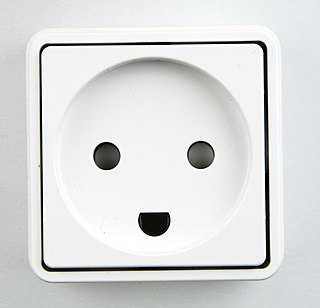
Pareidolia is the tendency for perception to impose a meaningful interpretation on a nebulous stimulus, usually visual, so that one sees an object, pattern, or meaning where there is none. It is a type of apophenia.

The North Face is an American outdoor recreation products company. The North Face produces outdoor clothing, footwear, and related equipment. Founded in 1966 to supply climbers, the company's logo draws inspiration from Half Dome, a distinct rock formation rising over 8,700 feet above sea level in Yosemite National Park. By the late 1990s, the label had expanded beyond outdoor enthusiasts by focusing on street couture and since the 2000s it is regarded as a streetwear style symbol label. In 2000, it was bought by VF Corporation.

Professional wrestling has accrued a considerable amount of jargon throughout its existence. Much of it stems from the industry's origins in the days of carnivals and circuses. In the past, professional wrestlers used such terms in the presence of fans so as not to reveal the worked nature of the business. Into the 21st century, widespread discussion on the Internet has popularized these terms. Many of the terms refer to the financial aspects of professional wrestling in addition to in-ring terms.
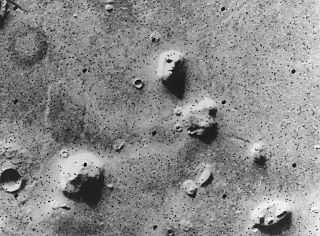
Cydonia is a region on the planet Mars that has attracted both scientific and popular interest. The name originally referred to the albedo feature that was visible from earthbound telescopes. The area borders the plains of Acidalia Planitia and the highlands of Arabia Terra. The region includes the named features Cydonia Mensae, an area of flat-topped mesa-like features; Cydonia Colles, a region of small hills or knobs; and Cydonia Labyrinthus, a complex of intersecting valleys. As with other albedo features on Mars, the name Cydonia was drawn from classical antiquity, in this case from Kydonia, a historic polis on the island of Crete. Cydonia contains the "Face on Mars", located about halfway between the craters Arandas and Bamberg.

"Poker Face" is a song by American singer Lady Gaga from her debut studio album, The Fame (2008). It was released on September 23, 2008, as the album's second single. It is a synth-pop song in the key of G♯ minor, following in the footsteps of her previous single "Just Dance", but with a darker musical tone. The main idea behind the song is bisexuality and was a tribute by Gaga to her rock and roll boyfriends. The song's lyrics feature various sexual innuendos.

FaceTime is a proprietary videotelephony product developed by Apple Inc. FaceTime is available on supported iOS mobile devices running iOS 4 and later and Mac computers that run Mac OS X 10.6.6 and later. FaceTime supports any iOS device with a forward-facing camera and any Mac computer equipped with a FaceTime Camera. FaceTime Audio, an audio-only version, is available on any iOS device that supports iOS 7 or newer, and any Mac with a forward-facing camera running OS X 10.9.2 and later.



















